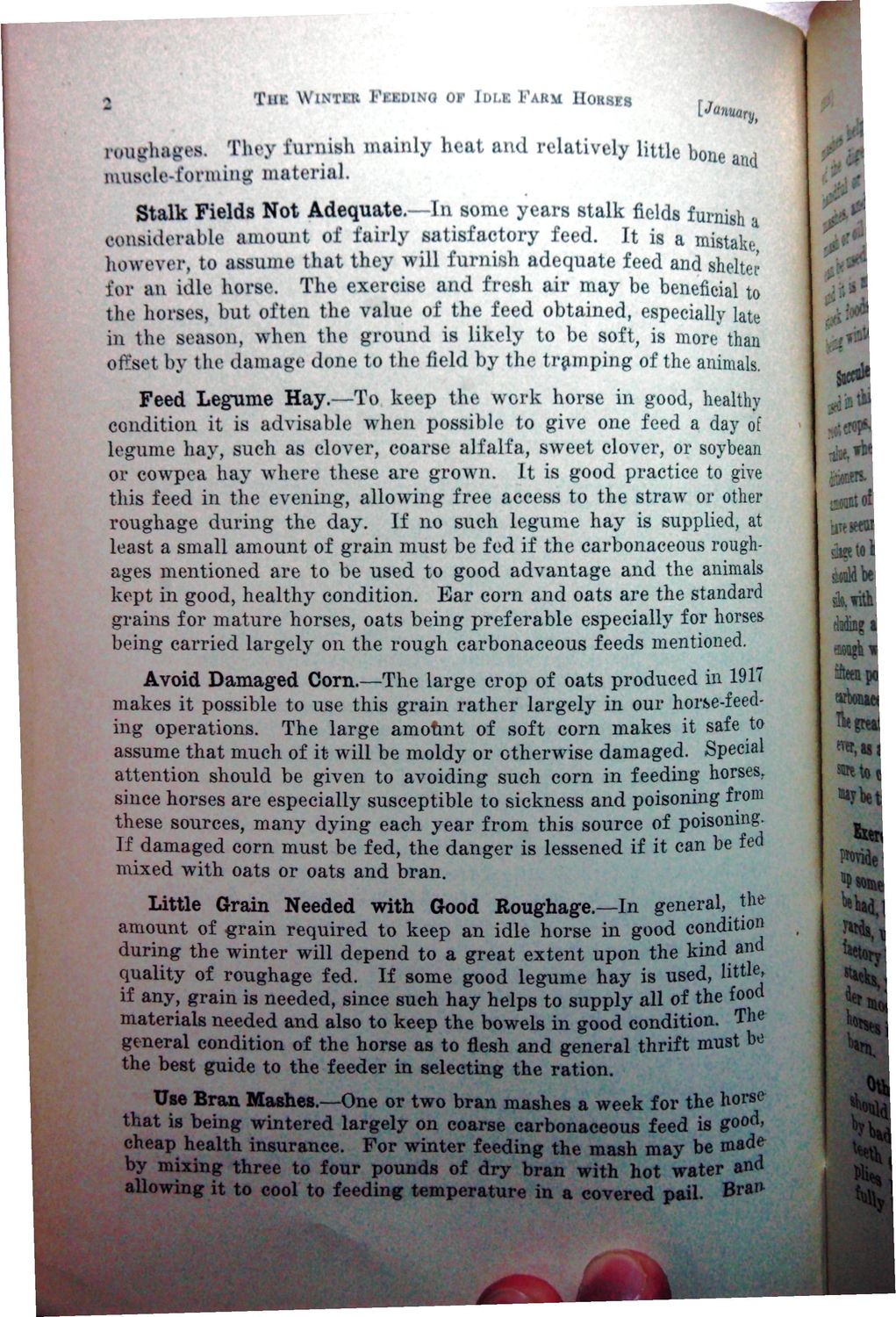| |
| |
Caption: War Publications - WWI Compilation 1923 - Article 43
This is a reduced-resolution page image for fast online browsing.

EXTRACTED TEXT FROM PAGE:
THE WINTER FEEDING OF IDLE FABM HORSES tJamry, * ruiiirha-rs. They furnish mainly heat and relatively little bone and muscle-forming material. Stalk Fields Not Adequate.—In some years stalk fields furnish i It is a mistake CO naidertble amount of fairly satisfactory feed. how and fresh air may be beneficial to for the horses, but often the value of the feed obtained, especially late in the season, when the ground is likely to be soft, is more than offset by the damage done to the field by the tramping of the animals. To keep the work horse in good, healthy Legume condition it is advisable when possible to give one feed a day of legume hay, such as clover, coarse alfalfa, sweet clover, or soybean or cowpea hay where these are grown. It is good practice to give this feed in the evening, allowing free access to the straw or other roughage during the day. If no such legume hay is supplied, at least a small amount of grain must be fed if the carbonaceous roughages mentioned are to be used to good advantage and the animals kept in good, healthy condition. Ear corn and oats are the standard grains for mature horses, oats being preferable especially for horses being carried largely on the rough carbonaceous feeds mentioned. Avoid Damaged Corn.—The large crop of oats produced in 1917 makes it possible to use this grain rather largely in our horse-feeding operations. The large amotint of soft corn makes it safe to assume that much of it will be moldy or otherwise damaged. Special attention should be given to avoiding such corn in feeding horses, since horses are especially susceptible to sickness and poisoning from these sources, many dying each year from this source of poisoning. If damaged corn must be fed, the danger is lessened if it can be fed mixed with oats or oats and bran. Little Grain Needed with Good Roughage.—In general, the amount of grain required to keep an idle horse in good condition during the winter will depend to a great extent upon the kind and quality of roughage fed. If some good legume hay is used, little, if any, grain is needed, since such hay helps to supply all of the food rrllP materials needed and also to keep the bowels in good condition. The general condition of the horse as to flesh and general thrift must v* the best guide to the feeder in selecting the ration. Use Bran Mashes.—One or two bran mashes a week for the horse that is being wintered largely on coarse carbonaceous feed is good, cheap health insurance. For winter feeding the mash may be made by mixing three to four pounds of dry bran with hot water and allowing it to cool to feeding temperature in a covered pail. Bra» • ' " sueetoi Mdbe A. with tiding a ifteeapo Nepal sot toe P'ovide- 'Htoryl
| |